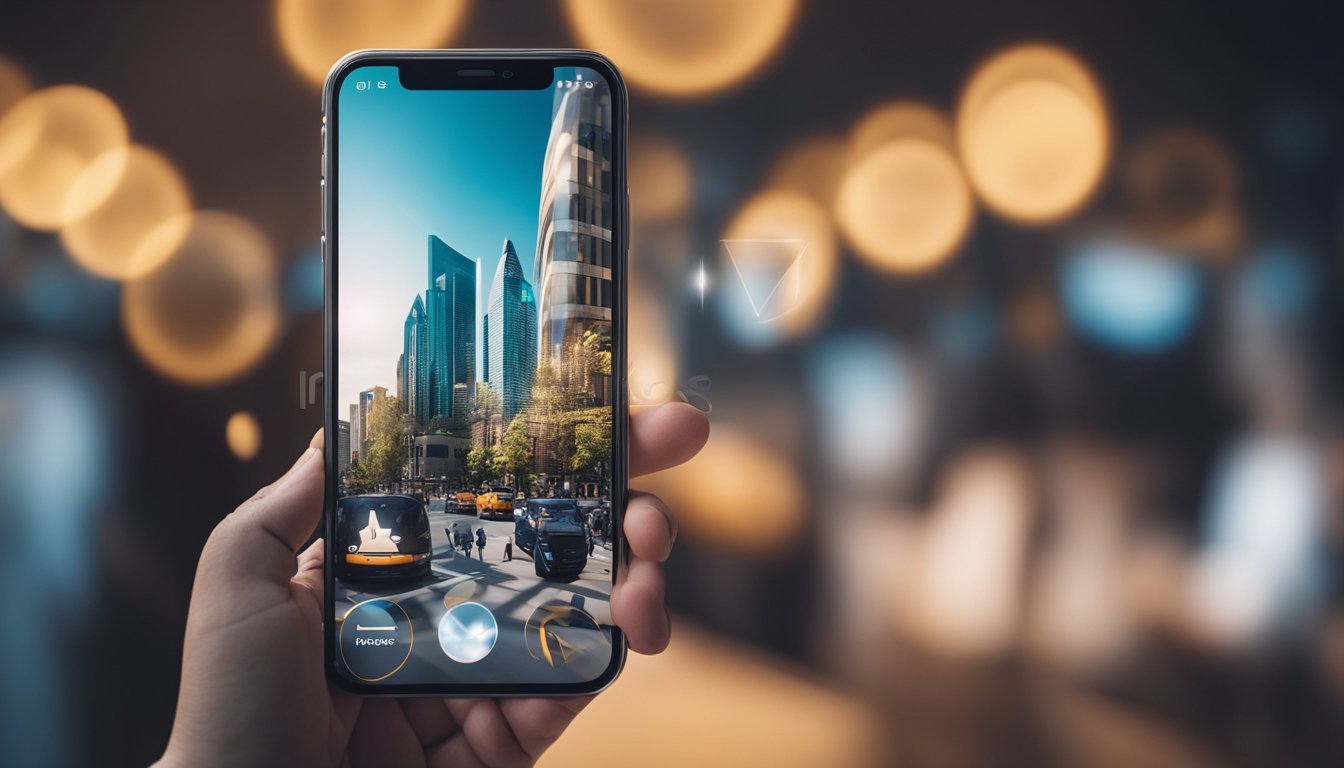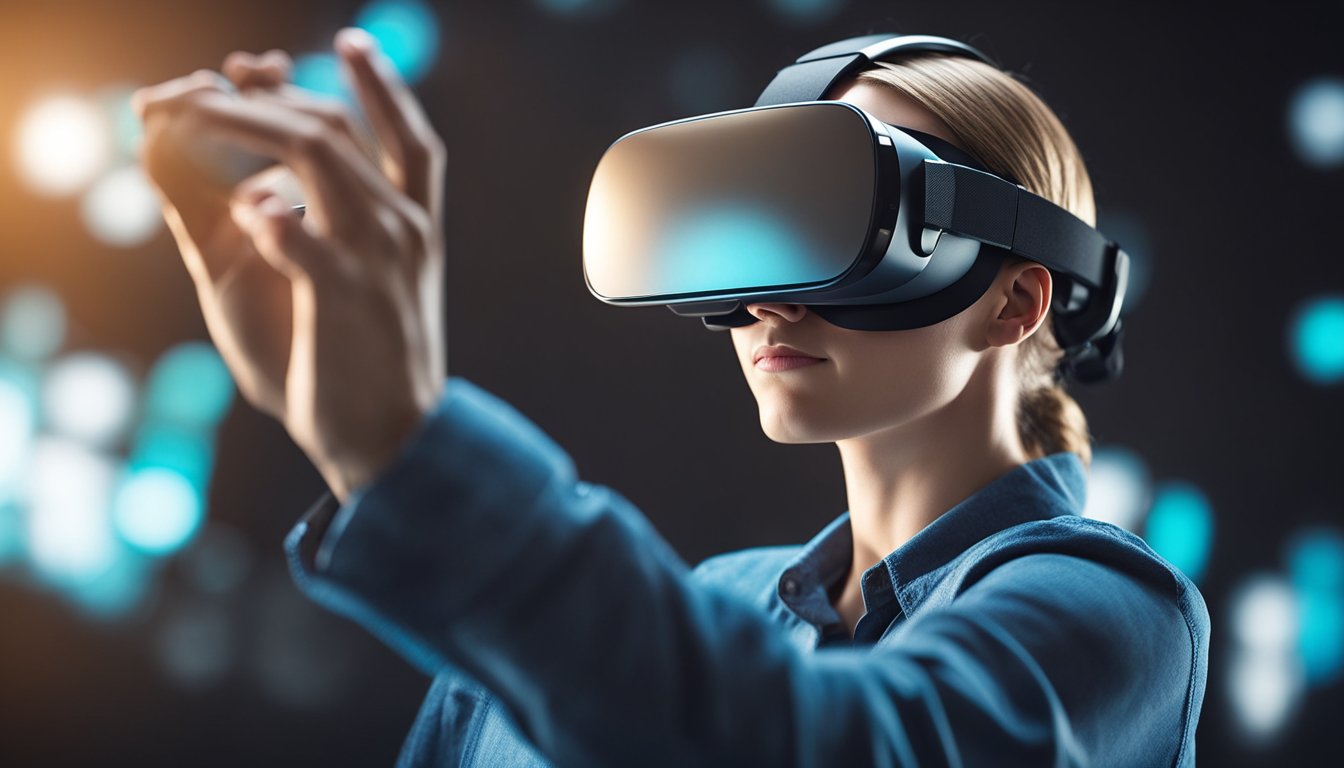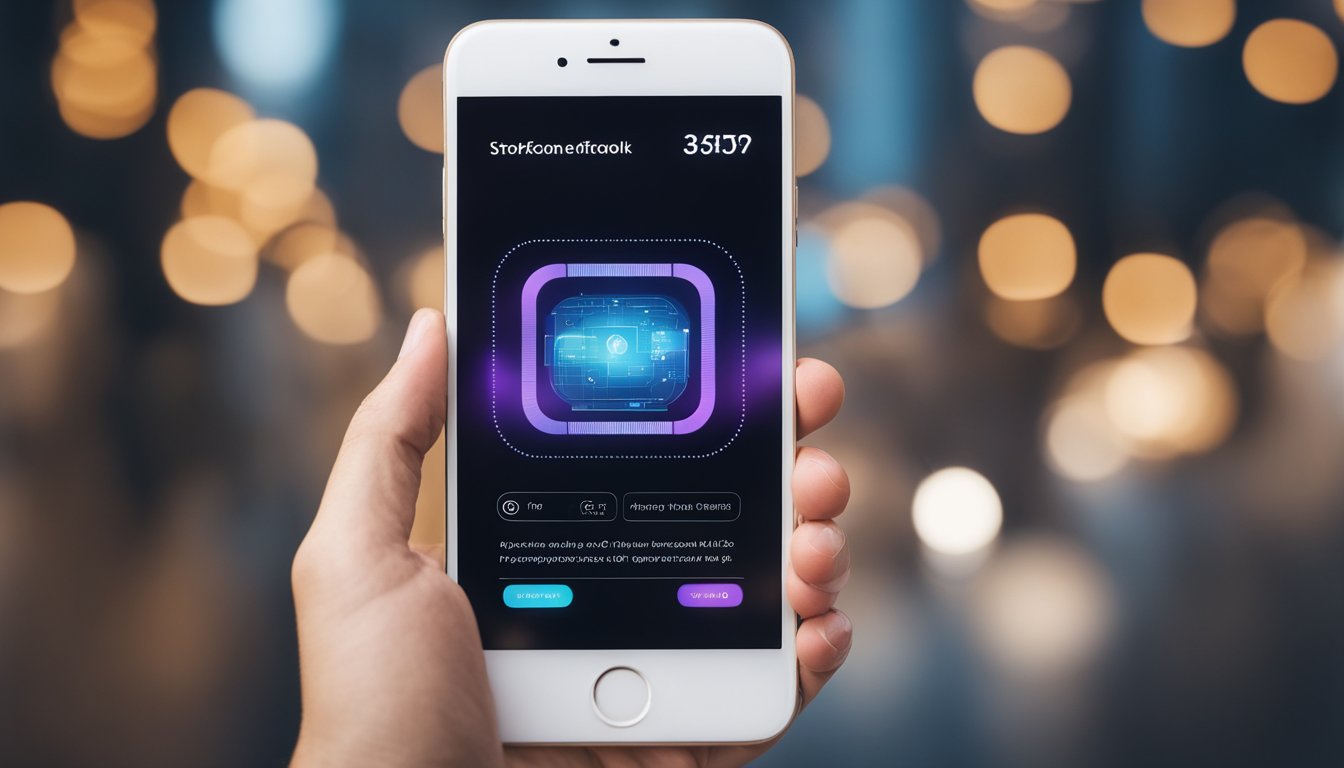Optimizing Your Mobile App for AR and VR A Comprehensive Guide
Creating a mobile app that is optimized for augmented reality (AR) and virtual reality (VR) can be a game-changer for businesses and industries looking to provide an immersive experience for their users. The rise of AR and VR technology has opened up new possibilities for mobile app development, allowing users to interact with digital content in a more engaging and realistic way.

Understanding AR and VR in mobile apps is crucial for designing and developing AR/VR mobile apps that provide a seamless and immersive user experience. Implementing AR/VR in various industries such as education, healthcare, retail, real estate, and manufacturing can differentiate businesses and provide exciting new directions for growth. By using powerful tools like AI, sensors, and GPS, businesses can create engaging experiences that increase brand awareness, sales, and customer engagement.
Key Takeaways
- Creating a mobile app optimized for AR and VR can provide an immersive experience for users and differentiate businesses.
- Understanding AR and VR in mobile apps is crucial for designing and developing apps that provide a seamless and immersive user experience.
- Implementing AR/VR in various industries can provide exciting new directions for growth and increase brand awareness, sales, and customer engagement.
Understanding AR and VR in Mobile Apps

As technology continues to advance, the integration of augmented reality (AR) and virtual reality (VR) in mobile applications is revolutionizing various industries. AR and VR are powerful tools that allow users to interact with digital content in an immersive and exciting way. In this section, I will provide an overview of AR and VR in mobile app development, including the basics of AR and VR, their applications, and their impact on user experience.
AR and VR Basics
AR and VR are two distinct technologies that offer different experiences to users. AR is the integration of digital data into the real world, while VR is the creation of a completely immersive experience in a digital environment. AR allows users to interact with virtual objects in a real-world environment, while VR creates a virtual world that users can explore and interact with.
AR and VR are not limited to gaming and entertainment. They have the potential to change the way we work, communicate, and learn. For example, AR could be used to provide real-time information and instructions to workers in the field or to create virtual classrooms for remote learning. VR can be used for training and simulations, allowing users to practice skills in a safe and controlled environment.
AR and VR in Mobile App Development
AR and VR are becoming increasingly popular in mobile app development. The rise of smartphones and powerful tools like Unity and ARKit have made it easier than ever to create engaging AR and VR experiences for mobile devices. Mobile AR apps use the smartphone camera and sensors to overlay digital content onto the real world. VR apps, on the other hand, use a headset to create an immersive experience in a virtual environment.
Mobile AR and VR apps have a wide range of applications. In the entertainment industry, AR and VR can be used to create engaging experiences for games, movies, and other forms of media. Businesses can use AR and VR to differentiate themselves from competitors and provide innovative services to customers. For example, retailers can use AR to create engaging shopping experiences, while real estate companies can use VR to give customers a virtual tour of properties.
Mobile AR and VR apps also have applications in healthcare, architecture, construction, manufacturing, and more. AR and VR can be used to create immersive training experiences, allowing users to practice skills in a safe and controlled environment. They can also be used for marketing and advertising, creating engaging experiences that keep customers engaged and interested.
In conclusion, AR and VR are powerful technologies that are changing the way we interact with digital content. Mobile AR and VR apps have a wide range of applications and offer exciting opportunities for businesses and consumers alike. With the rise of smartphones and powerful tools, the possibilities for AR and VR in mobile app development are endless.
Designing and Developing AR/VR Mobile Apps

As technology continues to evolve, mobile apps are becoming more interactive and immersive. Augmented reality (AR) and virtual reality (VR) are two of the most exciting technologies that are changing the way we interact with digital content. In this section, I will discuss the principles of designing and developing AR/VR mobile apps.
AR/VR Design Principles
Designing an AR/VR mobile app requires a different approach than designing a traditional mobile app. The goal of an AR/VR app is to create an immersive experience that feels like it's part of the real world. To achieve this, the app must be designed with the following principles in mind:
-
User experience (UX): The app should be easy to use and navigate, with clear instructions and intuitive controls.
-
Data visualization: AR/VR mobile apps can display data in new and exciting ways, such as 3D models or interactive charts.
-
Storytelling: AR/VR apps can tell stories in a way that traditional apps cannot. By placing the user in a real-world environment and adding virtual objects, the app can create a unique and engaging experience.
-
Real-world integration: AR/VR apps should be designed to work seamlessly with the real world. This can include using GPS and geolocation to provide directions or push notifications based on the user's location.
Development Tools and Frameworks
Developing an AR/VR mobile app requires powerful tools and frameworks. Here are some of the most popular tools and frameworks used in AR/VR mobile app development:
-
Unity: Unity is a powerful tool for creating 3D games and applications. It is widely used in the gaming industry and can be used to create AR/VR mobile apps.
-
ARKit and ARCore: ARKit is Apple's framework for creating AR experiences on iOS devices, while ARCore is Google's framework for creating AR experiences on Android devices.
-
Vuforia: Vuforia is a popular AR development platform that allows developers to create AR apps for both iOS and Android devices.
-
A-Frame: A-Frame is an open-source framework for creating VR experiences on the web. It is based on HTML and allows developers to create VR experiences that can be accessed from any device with a web browser.
In conclusion, designing and developing AR/VR mobile apps requires a different approach than traditional mobile app development. By following the principles of UX, data visualization, storytelling, and real-world integration, developers can create engaging experiences that differentiate their app from competitors. With powerful tools and frameworks like Unity, ARKit, ARCore, Vuforia, and A-Frame, developers can create innovative AR/VR mobile apps that provide exciting and immersive experiences for their customers.
Implementing AR/VR in Various Industries

As AR/VR technologies continue to develop, more and more industries are finding ways to incorporate them into their operations. Here are a few examples of how AR/VR is being implemented in various industries:
AR/VR in Education
AR/VR technologies have the potential to revolutionize the world of education and create a more immersive and engaging learning experience for students. Some practical implications could be:
- AR and VR technologies can be used to provide a more immersive and interactive learning experience.
- AR and VR can be used to simulate real-world scenarios, allowing students to practice skills in a safe and controlled environment.
- AR and VR can be used to visualize complex concepts and make them easier to understand.
AR/VR in Healthcare
AR/VR technologies are also being used in the healthcare industry to improve patient outcomes and reduce costs. Some practical implications could be:
- AR and VR can be used to simulate surgeries, allowing surgeons to practice and refine their skills before performing them on actual patients.
- AR and VR can be used to train medical professionals, allowing them to practice and refine their skills in a safe and controlled environment.
- AR and VR can be used to visualize patient data, allowing medical professionals to better understand and diagnose medical conditions.
AR/VR in Retail
AR/VR technologies are also being used in the retail industry to create more personalized and engaging shopping experiences. Some practical implications could be:
- AR apps let shoppers interact with products and help in creating personalized shopping experiences.
- AR and VR can be used to create virtual showrooms, allowing customers to see products in a virtual environment before making a purchase.
- AR and VR can be used to provide customers with more information about products, such as how they are made and where they come from.
Overall, AR/VR technologies have the potential to transform a wide range of industries and create more immersive and engaging experiences for customers and professionals alike.
Frequently Asked Questions

What are some popular tech stacks for developing AR/VR mobile apps?
There are several popular tech stacks for developing AR/VR mobile apps. Some of the most commonly used ones include Unity, Unreal Engine, Vuforia, ARKit, and ARCore. Each of these tech stacks has its own strengths and weaknesses, so it's important to choose the one that best suits your needs.
What are the software requirements for creating an AR/VR mobile app?
To create an AR/VR mobile app, you will need a computer with a powerful processor and graphics card, as well as specialized software such as Unity or Unreal Engine. You may also need to install additional software development kits (SDKs) and plugins, depending on the tech stack you choose.
How can developers program marker-based AR apps?
To program marker-based AR apps, developers typically use a combination of computer vision algorithms and machine learning techniques. They may also use specialized SDKs such as Vuforia or ARToolkit to help with image recognition and tracking.
What are some of the best tools and libraries available for developing AR/VR mobile apps?
There are several tools and libraries available for developing AR/VR mobile apps, including Unity, Unreal Engine, Vuforia, ARKit, ARCore, and Wikitude. Each of these tools has its own unique features and capabilities, so it's important to choose the one that best fits your needs.
What are the steps involved in developing an AR/VR mobile app?
The steps involved in developing an AR/VR mobile app typically include defining the app's requirements, designing the user interface and experience, creating 3D models and animations, programming the app's functionality, testing and debugging, and finally deploying the app to the app store.
What is the estimated cost of developing an AR/VR mobile app?
The cost of developing an AR/VR mobile app can vary widely depending on a number of factors, including the complexity of the app, the tech stack used, and the level of expertise required. However, most AR/VR mobile apps typically cost anywhere from $50,000 to $500,000 or more to develop.

We are committed to delivering a new level of automation that will help organizations save time, money, and staffing resources.
 WRITE FOR US!
WRITE FOR US!
